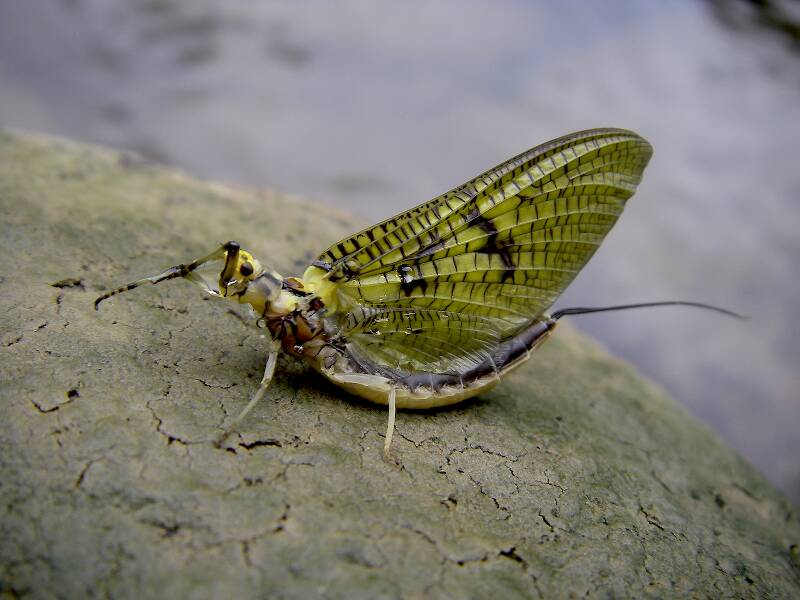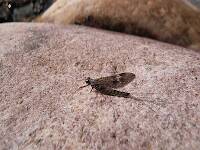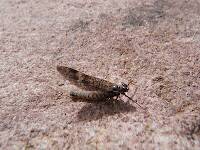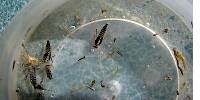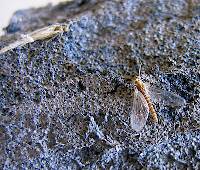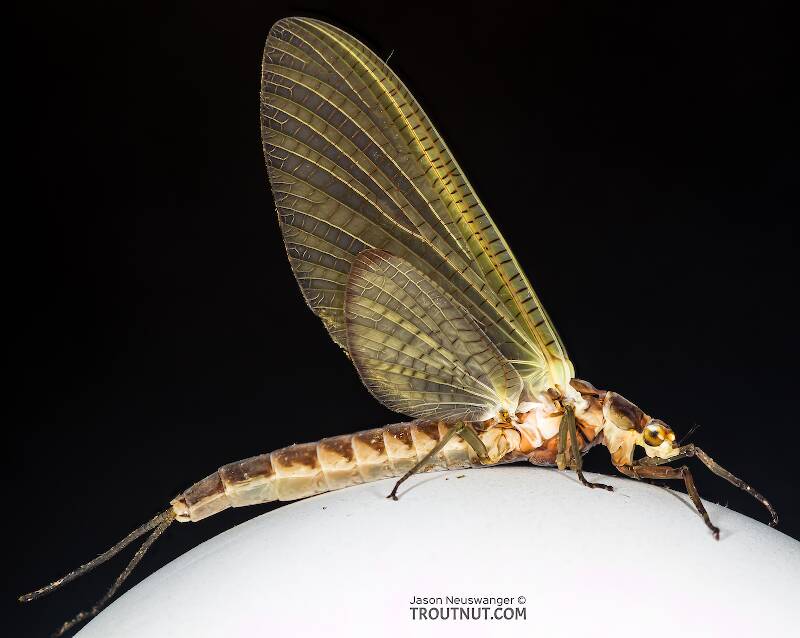
Hex Mayflies
Hexagenia limbata
The famous nocturnal Hex hatch of the Midwest (and a few other lucky locations) stirs to the surface mythically large brown trout that only touch streamers for the rest of the year.
Featured on the forum
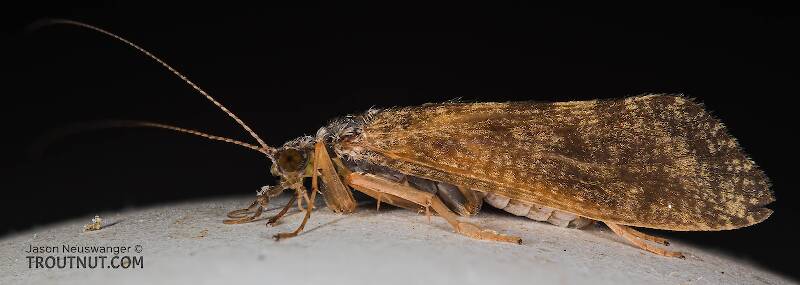

Troutnut is a project started in 2003 by salmonid ecologist Jason "Troutnut" Neuswanger to help anglers and
fly tyers unabashedly embrace the entomological side of the sport. Learn more about Troutnut or
support the project for an enhanced experience here.

This was the only Rhithrogena specimen in a large sample of nymphs from a small Catskill stream. It looks virtually identical to Rhithrogena impersonata specimens collected in the Midwest, but I didn't get to check the distinguishing features under a microscope.
Kinza
Posts: 1
Posts: 1
Kinza on Feb 4, 2017February 4th, 2017, 3:31 am EST
Can you please identify the genus of Family Heptagenedae if I send you images?
Millcreek on Feb 4, 2017February 4th, 2017, 4:17 am EST
Kinza-
Possibly, if the photos are good and show distinguishing characteristics.
Possibly, if the photos are good and show distinguishing characteristics.
"If we knew what it was we were doing, it would not be called research, would it?"
-Albert Einstein
-Albert Einstein
Crepuscular on Feb 6, 2017February 6th, 2017, 3:06 am EST
Are you sending adult or immature specimen photos?
General location is somewhat helpful as well. I'm assuming North America here, so NW, SW,MW,NE,SE.
If you are sending photos of the nymphs, the following is helpful (necessary for a confident identification):
1.a good ventral photo of the abdomen
2. A good dorsal photo of the abdomen with gills plainly visible
3.A good photo of the terminal abdominal segment with caudal filaments visible
4.A good Dorsal photo of the head
5.Fairly detailed photos of gills on segments 1-6.
General location is somewhat helpful as well. I'm assuming North America here, so NW, SW,MW,NE,SE.
If you are sending photos of the nymphs, the following is helpful (necessary for a confident identification):
1.a good ventral photo of the abdomen
2. A good dorsal photo of the abdomen with gills plainly visible
3.A good photo of the terminal abdominal segment with caudal filaments visible
4.A good Dorsal photo of the head
5.Fairly detailed photos of gills on segments 1-6.
Quick Reply
Related Discussions
Topic
Replies
Last Reply
Re: Help obtaining photos of larval insects for a City of Denton, TX photographic key to ID'ing.
In the Identify This! Board by Rdjudy
In the Identify This! Board by Rdjudy
1
Jul 28, 2008
by Taxon
by Taxon
1
Sep 5, 2006
by Troutnut
by Troutnut


